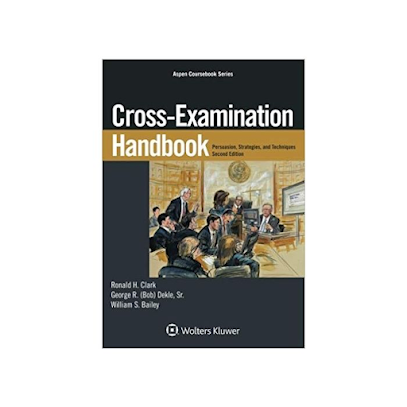As was discussed in previous posts ("How to Construct a Great Cross-Examination" and "Impeachment Cross-Examination Checklist), when the CONTENT of your cross-examination is designed to IMPEACH the witness (rather than gathering concessions), the techniques you use to accomplish the impeachment are critical. These are the seven techniques for an effective impeachment cross-examination of a witness:
1. Assess the witness and adjust your approach;
2. Lock the witness into the testimony before you impeach;
3. Close all the exits to prevent the witness from escaping;
4. Establish a motive for the witness to prevaricate;
5. Paint a picture for the jury;
6. Surprise the witness; and
7. Use visuals or tangible evidence if possible.
At the top of the list is the technique of assessing the witness and adjusting your approach to fit that witness. David Paul Jones, a British barrister is quoted in Francis L. Wellman’s book The Art of Cross-Examination, as follows: “Be mild with the mild; shrewd with the crafty; confiding with the honest; merciful to the young, the frail or the fearful; rough to the ruffian; and a thunderbolt to the liar. But in all this, never be unmindful of your dignity.”
Watch the following cross-examination in A Few Good Men with the seven techniques in mind. Following the movie clip is the list of seven techniques with notes from the cross in the movie.
Here is a portion of the seven techniques list with notes about how they were applied in the cross shown in the video:
1. Assess the witness and adjust your approach – the cross-examiner shifts to being rough with the witness when the witness becomes a ruffian;
2. Lock the witness into the testimony before you impeach—the cross-examiner locks the witness in and is able to preface a question with “a moment ago you said” to telegraph that the witness is locked in;
3. Close all the exits to prevent the witness from escaping—the cross-examiner closed this exit with “any chance he ignored the order”;
4. Establish a motive for the witness to prevaricate—here the obvious motive was to conceal the fact that he ordered the code red; and
5. Paint a picture for the jury—brush stroke by brush stroke of what happened; and
6. Surprise the witness—with the fact that he was prepared to call witnesses to contradict the witness under cross-examination.
Future posts will cover the wrecking crew of impeachment cross-examinations and show how these techniques can be applied.
You can read about impeachment cross-examination in Cross-Examination Handbook.


No comments:
Post a Comment